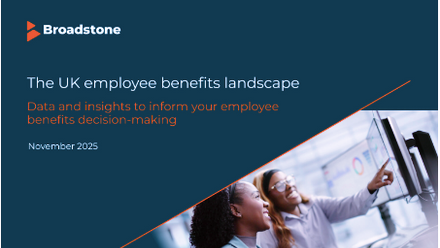REBA Inside Track: Why cherry picking private health interventions is supporting good outcomes
Employer-funded health benefits are going through a gentle revolution. As a result, employer outcome measures are being rethought.
To simplify hugely: for decades private medical insurance (PMI) was typically offered primarily to more senior employees and was largely a desirable perk to aid recruitment and retain top talent.
Let’s be honest, it's not as though senior employees have more pressing health needs than others.
Health data often shows it’s the reverse, with those from lower socioeconomic streams suffering worse health.
Selecting the most effective interventions
In a post-pandemic, NHS-struggling world, however, increasing numbers of employers are funding private health interventions to wider groups of employees.
This is primarily aimed at circumventing NHS waiting lists to get people back to work more quickly, or to keep them in work while they receive faster treatments.
This is not to say that full PMI is being offered more widely, but rather more employers are cherry picking the private medical services most needed for their workforce profile.
From slimmed down versions of PMI or direct purchasing of health screenings or assessments, to use of virtual GPs or menopause support, employer funding of private treatments is on the rise.
This is also reformatting the eco-system.
Given that buying predictable medical interventions and support bundled with insurance is the more expensive way of doing it (not least it pushes up employer premiums which incur insurance premium tax) standalone offerings (outside insurance) are evolving.
From insurers through to platform providers, single private medical offerings and bundled packages are being developed.
To be clear: unexpected medical events still need to be insured for.
The need to measure outcomes
Anyone running a health trust or captive is probably used to working this way. It is still, however, a relatively new way of thinking to those more used to buying insurances through an intermediary.
In addition, it definitely needs expertise to help decide the best buying options so employers achieve the clinical outcomes they need for their employees.
This leads to the next predicted shift: measuring the outcome of spend on private medical.
Often the aim is to reduce people risk and ensure that the direct negative impact of employee health on customer service, project delivery and other forms of productivity are minimised.
As such, measurements need to be gathered to back up or discount any decision to purchase employer-funded health and medical benefits.
More data isn’t necessarily the answer, but being extremely clear on robust measurable outcomes is.
This will differ by organisation and even within organisations.
For example, one benefits director at a construction firm told REBA that paying privately for workers to get rapid access to physiotherapy to get them back working in a managed way was highly effective.
But for conditions that were more serious or long term, then they are happy for employees to go via the NHS because using private services would not change timescales on return to work.
This employer has very specific clinical and HR outcomes to measure against to match their objectives.
Getting to the nub of the data
Getting precise clinical outcome data is complex and often siloed (even in the NHS).
It is, however, a subject for debate between clinical providers such as the private clinicians (including private hospitals) delivering the care, the insurers and the intermediaries such as employee benefits consultants.
They are aware that without a clearer picture on return on spend on private health benefits, employers struggle to justify spend or prove effectiveness.
Employers could ask:
- Do we know if the clinical outcomes would have been the same or better via the NHS? (e.g. speed of access, quality of treatment, return to work)
- Do we get the data we need to quantify our people risk?
- Do we have our own clear inputs and outcomes to measure against?
- Do we get the data outcomes we need on primary care? (e.g. Use of virtual GPs might be up, but is that helping to reduce claims costs over time?)
- Do we get the data we need on secondary care? (e.g. Are serious conditions being identified earlier than before?)
- Do we ask employees about their satisfaction or experience with clinical outcomes or the service overall (if they are willing to share)?
Of course, there are many reasons that this data can be complex to source:
- Patient confidentiality
- Switching insurance products or providers hampers long term trend data
- Data being an extra service that is charged for within the eco-system
- Data is not joined up between clinicians.
Evolving supply chain
As use and provision of health benefits gradually shifts, and medical advances change treatments (either increasing or reducing costs), so the entire supply chain and outcomes will evolve.
Employers who want to engage more on people risk data modelling and linking outcomes to spend can start to increase their knowledge of how the clinical side of the market works.
The goal is not to become clinical experts, but to be more informed to ask the right questions of brokers, insurers, providers and consultants.







